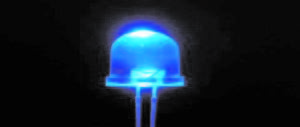
SINGAPORE (TIP): Blue light emitting diodes (LEDs) have strong antibacterial effect on major food borne pathogens and can be used as a chemical-free food preservation method, a new study has found.
The team, led by Yuk Hyun-Gyun from the National University of Singapore Faculty of Science, found that blue LEDs are most effective when in cold temperatures (between 4 degrees Celsius and 15 degrees Celsius) and mildly acidic conditions of around pH 4.5.
This opens up novel possibilities of using blue LEDs as a chemical-free food preservation method, researchers said.
Acidic foods such as fresh-cut fruits and ready-to-eat meat can be preserved under blue LEDs in combination with chilling temperatures without requiring further chemical treatments that are commonly needed for food preservation.
Bacterial cells contain light sensitive compounds that adsorb light in the visible region of the electromagnetic spectrum, which is mainly blue LED light. Exposure to blue LED light can cause these cells to die.
In this study, the team placed three major foodborne pathogens – Listeria monocytogenes, Escherichia coli and Salmonella Typhimurium – under blue LED illumination, and varied the pH conditions from acidic to alkaline.
The team found that higher bacterial inactivation was achieved at acidic and alkaline pH conditions than when neutral. In particular, acidic conditions were more detrimental than alkaline conditions for L monocytogenes. For E coli and S Typhimurium, alkaline conditions were most detrimental although acidic conditions were also sufficiently effective in deactivating them.
A previous study in 2013 by the same team had also looked at the effect of temperature on blue LED’s ability to deactivate bacterial cells and found the antibacterial effect to be most enhanced in chilling temperatures.
“Taken together, our two studies point to a potential for preserving acidic foods in combination with chilling temperatures without chemical treatments. This could meet the increasing demand for natural or minimally-processed foods without relying on chemicals such as acidulants and artificial preservatives to preserve food products,” Yuk said.
The next step of the research is to investigate whether LED illumination can effectively kill pathogenic bacteria without deterioration of food products, said Yuk.





Be the first to comment